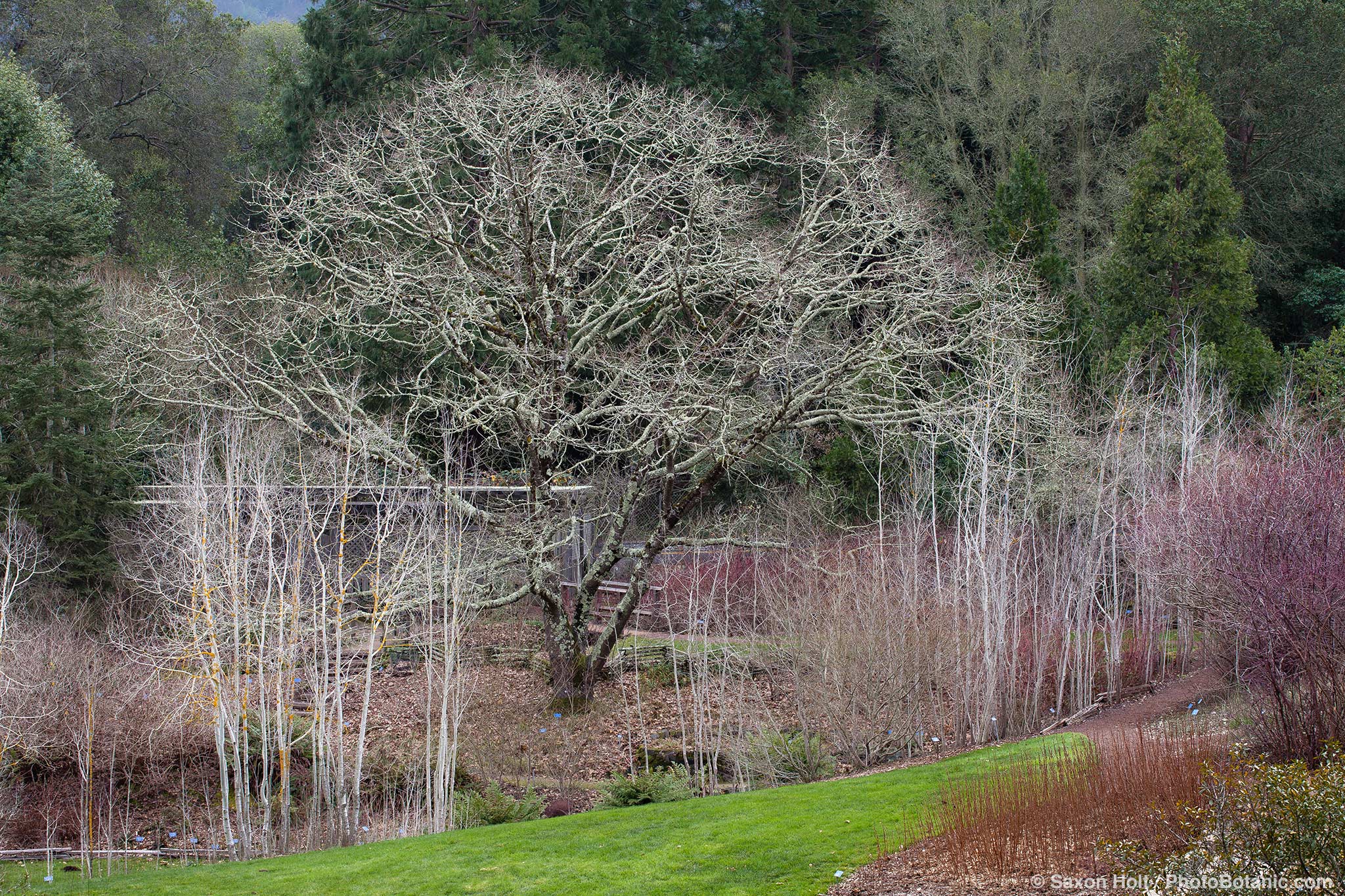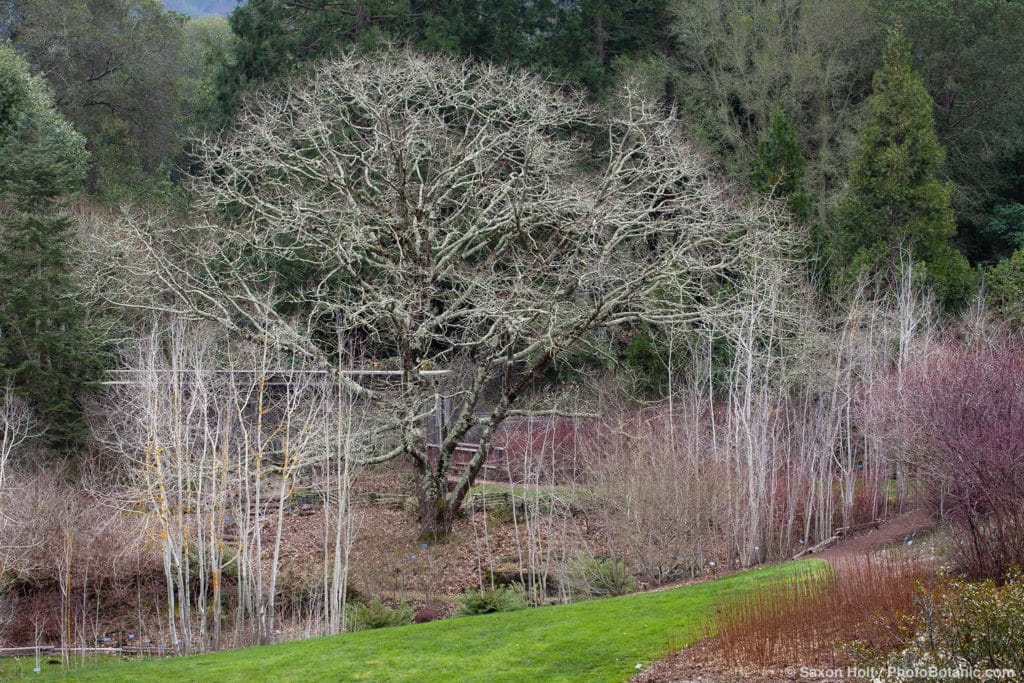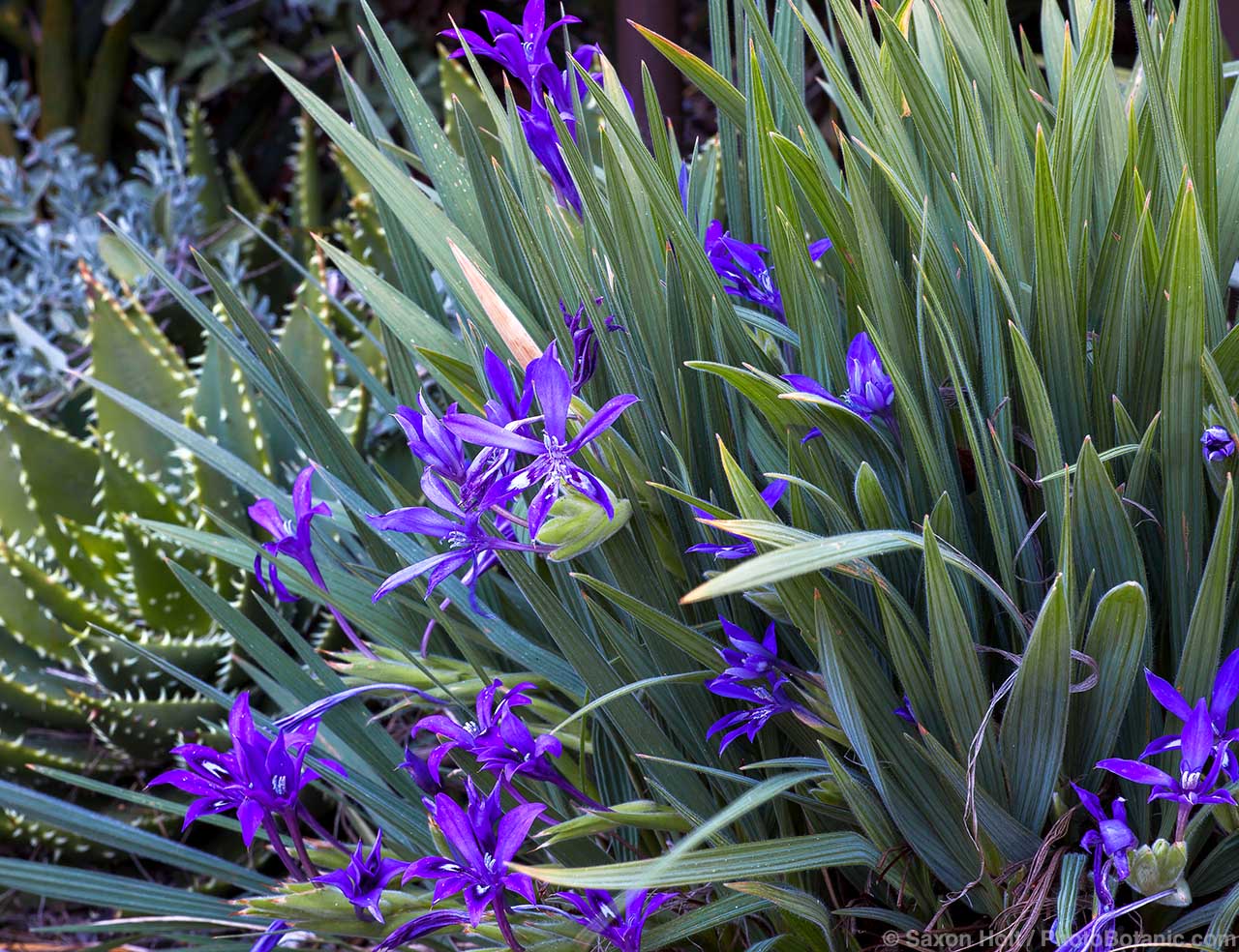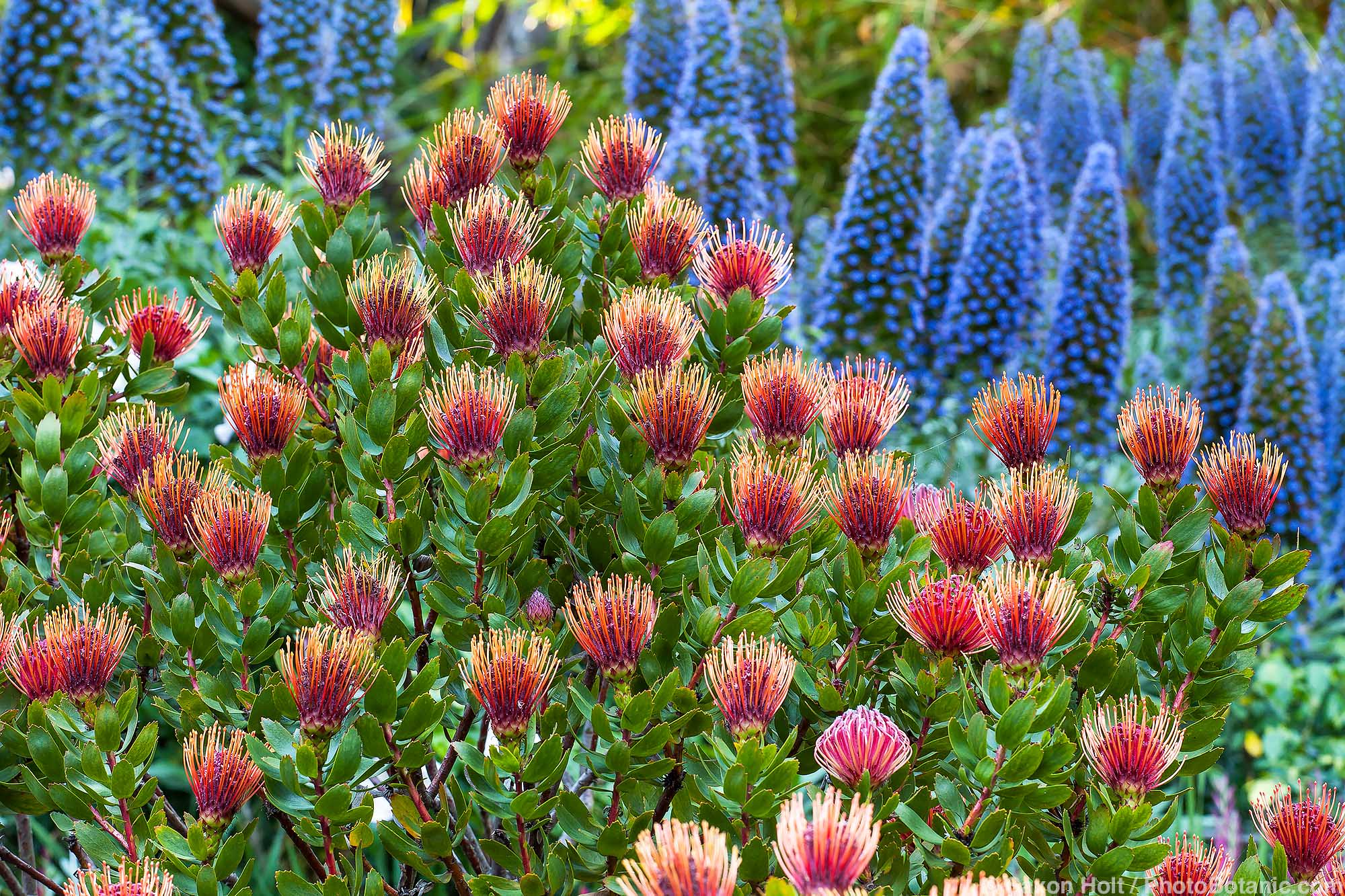California buckeye

Share This!
California buckeye (Aesculus californica) puts on a bold and fascinating seasonal show.
In late winter bright apple-green new leaves burst forth at branch ends and rapidly unfold, quite suddenly claiming the stage among the darker greens of evergreen oaks, bays, and pines. In spring to early summer showy spikelike clusters of lightly fragrant creamy white flowers are held gracefully upright above the leaves. The large polished-brown seeds peeking through leathery, pear-shaped pods are highly decorative on silvery gray branches in fall.
Native to much of California on dry slopes, in canyons, and along waterways, California buckeye needs no summer irrigation once established, though trees will respond to heat and drought by dropping leaves. It’s hard to be fully prepared for the large palmate leaves to turn pale yellow, droop sadly on the tree, and drop in what seems to be high summer. Occasional deep soakings may help keep leaves on the tree a little longer in coastal areas.
California buckeye grows 15 to 35 feet tall and spreads more widely. Form is best in sun, where trees develop into a living sculpture of multiple or low-branching trunks, symmetrically outstretched branches, and a delicate tracery of small branchlets. Trees thrive in part shade but may be awkwardly shaped and rangy. Good drainage is appreciated. Deer will browse the leaves.
In years of normal rainfall, the heavy seeds sprout and establish themselves pretty much where they fall, unless they roll downhill or are carried away by water. They can be moved before the large whitish root finds its way into the soil. Plant with the root covered by soil and the seed at least partially exposed. Keep soil lightly moist until new growth is decisively underway. Water for the first year or two, especially if winters are dry.
Share This!
Related Articles
By: Nora Harlow
By: Nora Harlow
By: Nora Harlow








